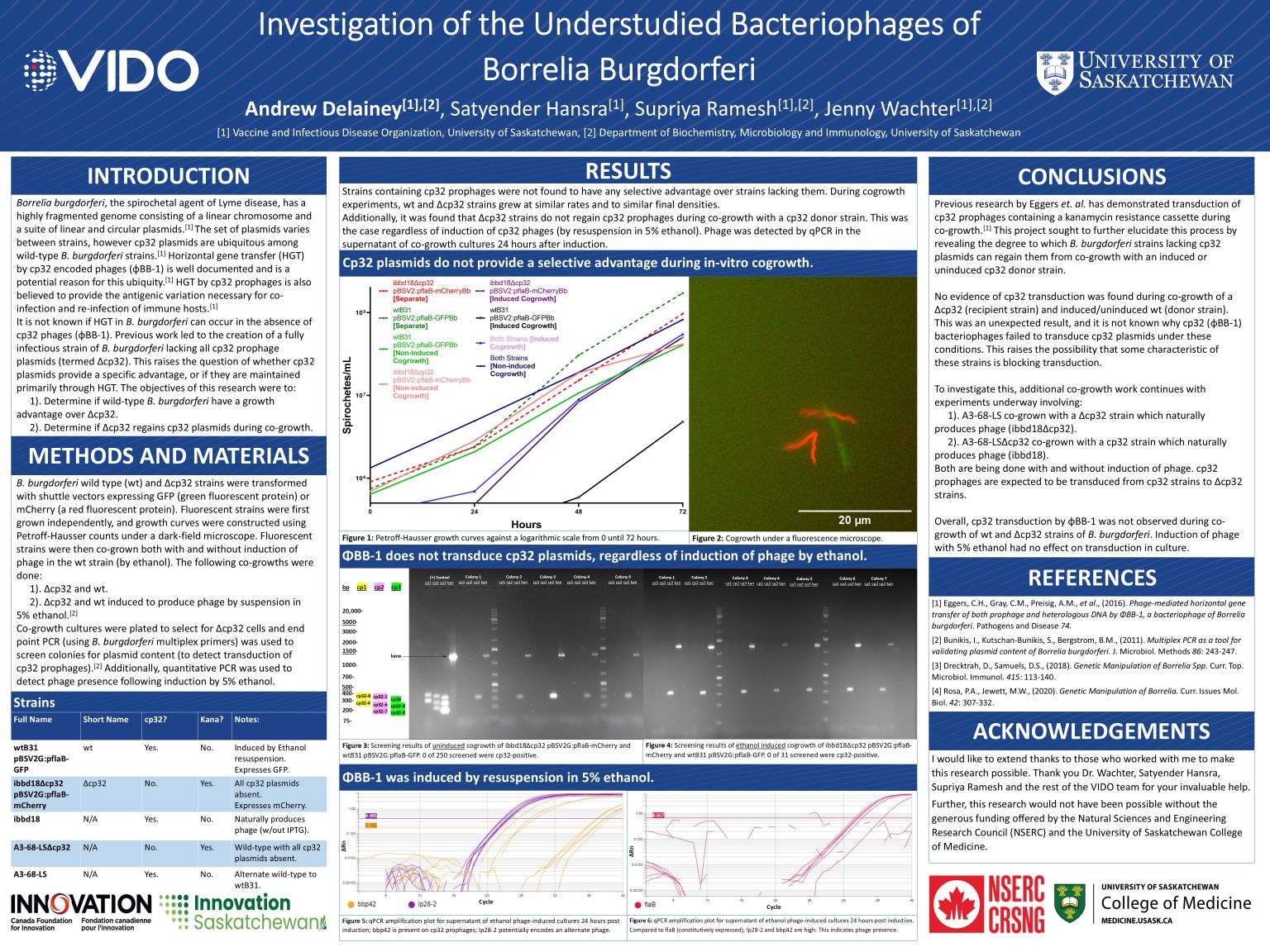
Investigation of the Understudied Bacteriophages of Borrelia Burgdorferi
Andrew Delainey
Borrelia burgdorferi, the causative agent of Lyme disease, contains up to ten prophage plasmids known as cp32. The cp32 phages act as transducing agents, transferring DNA between Borrelia. We engineered a B. burgdorferi strain lacking all cp32 plasmids (Δcp32) and set forth to investigate whether cp32 plasmids would be regained during co-growth with cp32-containing strains. Experiments paired either ibbd18Δcp32 recipients with wild-type (wt) donors or Δcp32 recipients with ibbd18 donors. The ibbd18 derivative carries a unique antibiotic resistance cassette and can undergo phage induction under specific conditions. Wt cells also induce cp32 phages following ethanol treatment.
Co-growth experiments showed no growth defects. 150 colonies per co-growth condition were screened by end-point PCR. Conditions tested included wt with ibbd18Δcp32, ethanol-induced wt with ibbd18Δcp32, and Δcp32 with induced ibbd18. No evidence of cp32 transduction was observed. This contrasts with previous findings reporting horizontal gene transfer under phage-inducing conditions. Strain specific or experimental variables may have limited transduction, and further experiments are planned.
Notably, phage induction produced detectable cp32 prophages in supernatants, along with lp28-2, which may encode an alternative phage. Overall, phage mediated HGT is thought to be critical to the pathogenicity and lifecycle of Borrelia, warranting the need for further research.
